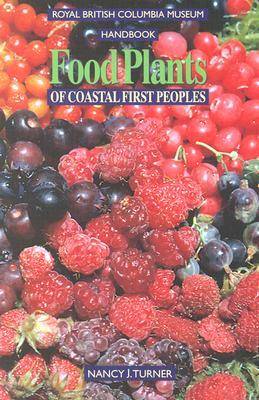Royal British Columbia Museum Handbook
3 total works
This book describes some 300 plant species used by the people of the Okanagan, Thompson, Carrier, Chilcotin, and Kootenay, among others. Detailed botanical descriptions of the plants aer accompanied by photographs and notes on their habitat and distributions as well as information on their collection, preparation, and use.
For centuries, First Peoples in B.C. have harvested a variety of wild plant foods. Berries, nuts, roots, greens, mushrooms, lichen -- all were important components of their diets. They learned which plants and plant parts to eat, the best seasons for gathering them, the most efficient methods of harvesting, and the best ways to prepare them for eating and storage.
In this companion book to Food Plants of Coastal First Peoples, the author describes more than 150 plant foods used by first Peoples in the interior of British Columbia and northern Washington. Originally published in 1978, this new edition is expanded and updated .
Nancy J. Turner is a professor of Environmental studies at the University of Victoria and a research afffiliate at the Royal British Columbia Museum. She is the author of many books and articles on ethnobotany and is a leading authority on the subject.
In her third ethnobotany handbook, Nancy Turner focuses on the plants that provided heat, shelter, transportation, clothing, implements, nets, ropes and containers--the necessities of life for First Peoples in British Columbia and adjacent territories. She also shows how plant materials were effectively used in many other ways, such as for decoration and ornamentation, as scents, cleansing agents and insect repellents, and in recreational activities.
Over the millennia, the First Peoples have become highly skilled in the arts of working with plant materials. Turner describes more than a hundred of these plants, their various uses and their importance in the material cultures of First Nations. Each description has a colour photograph of the plant to aid in its identification.


